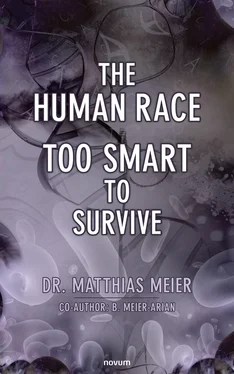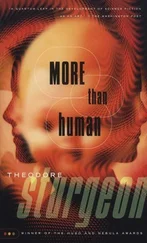Further studies suggest that vitamin C may play a beneficial role in cancer patients; to date, the data have been evaluated in animals and have not been incorporated in human clinical treatment standards.12, 13
Pauling himself is said to have taken 18 grams of vitamin C per day for years and lived to be 93 years old. Nevertheless, he died of cancer.
The realization that a deficiency of a particular nutrient can lead to disease has been known and accepted for over 100 years now. However, vitamins make up only a fraction of the full 90 essential nutrients that humans need on a daily basis:
1 Vitamins: A, B1 (thiamine), B2 (riboflavin), B3 (niacin), B5 (pantothenic acid), B6 (pyridoxine), B12 (cyanocobalamin), C, D, E, K, biotin, choline, flavonoids and bioflavonoids, folic acid and inositol. Other essential nutrients are
2 Amino acids: valine, lysine, threonine, leucine, isoleucine, tryptophan, phenylalanine, methionine, histidine, arginine, taurine, and tyrosine (the last three are not called essential, but can cause certain diseases if they are deficient).
3 Fatty acids/cholesterol: linoleic acid, linolenic acid, arachidonic acid and cholesterol (while cholesterol is also produced by the body, some scientists suggest that a deficiency may result in Alzheimer’s dementia, type II diabetes mellitus, erectile dysfunction, and burnout, among other things).
However, research on nutrition has also yielded further advances into our understanding of metabolism in recent decades, which should not be withheld from the reader here. If deficiencies in vitamins, amino acids or fatty acids can lead to certain diseases or symptom complexes, what about minerals? Here are some important basics:
Minerals are found exclusively in the Earth’s crust. Neither plants nor animals nor humans can produce them. So, as living creatures on Earth, we depend on plants to absorb minerals from the Earth and make them available for us to metabolize by eating them. This is the way of life—it cannot be changed. You can’t eat calcium stones and think it will strengthen your bones. Likewise, inorganic iron will not help your blood levels. That minerals exist and play a role in our health has also been known for about 100 years. In 1912, a Prof. Wasserman from Berlin observed that tumors in mice disappeared when they were injected with selenium. Since the tumors in mice and humans have a high similarity, Prof. Wasserman expected an enormous benefit in the fight against cancer in humans by using selenium.14 In 2002/2003, a court case against the FDA (Federal Drug Administration in the U.S.) took place, based on the claim that selenium reduces the likelihood of developing some cancers (was won). In 2000, a study appeared in the journal “The Lancet,” which emphasized the importance of selenium. Selenium is essential for human health (6). It reduces antioxidative stress, protects against progression to AIDS in HIV-positive people, promotes sperm mobility, and appears to reduce the likelihood of miscarriage. Deficiency has been linked to mood disorders as well as cardiovascular disease.
In general, minerals are necessary and serve, among other things, as co-factors for the approximately 10,000 enzymes in the human body that catalyze biochemical reactions, for tissue stability, physiological processes such as muscle contraction, and much more. The real question is whether or not we take in the necessary nutrients through our diet. Here, too, one finds contradictory statements. In 1992, the so-called “Earth Summit” of the United Nations took place in Rio de Janeiro. It was stated that between 1936 and 1992, the soils of the U.S. and Canada had lost about 85% of their mineral content, Asia and South America about 76%, Africa 74%, Europe 72% and Australia 55%. In March 2006, the UN recognized that multiple nutrient deficiencies were increasing in frequency. According to the Assistant Secretary General of the United Nations at the time (Catherine Bertini), the overweight were as poorly nourished as the hungry. It’s not the quantity that matters, but the quality. These findings were also reflected in the nutrient levels in various vegetables and fruits. Between 1963 and 2000, green leafy vegetables showed a 62% loss of vitamin C, 41% loss of vitamin A, 29% loss in calcium content, 52% loss of potassium, and 84% loss of magnesium. Cauliflower had lost about half of its vitamin C, thiamine and riboflavin content, and hardly any calcium was found in commercial pineapple. The reason for the reduced mineral content is due to the decreased mineral content in the soil, as plants leach these minerals from the soil. This is what makes them suitable as food for humans and animals. However, the minerals should be replaced in the soil. This fact has been taken into account in various cultures for thousands of years. Wood ash, for example, was spread on crop fields or in gardens. Wood ash is nothing more than the minerals left over from burning wood. The long-lived cultures of this world have never lost this custom. In addition, pesticides and herbicides bind minerals, preventing them from being released in the human body for metabolic use. Bacteria in soils that promote mineral uptake by plants are directly harmed by the chemicals. Meanwhile, pesticides are found in breast milk, urine, feces and various tissues. Another problem is microplastics, which are now being found even in drinking water and in the urine of children and young people. Pesticides and herbicides accumulate in tissues (especially fat) and are difficult to detoxify. Erosion of the topsoil, which is where the actual minerals are found, happens due to wind and weather, but also due to overuse of pastures, ever-increasing harvests of crops and deforestation. The loss of organic material results in a loss of nitrogen, minerals, and rare earths, so the soil can hold less liquid and plant growth is hindered.
Of course, as with all topics, there are studies that show the opposite. They report that soils are not losing minerals and that in some nations there is even a surplus. Supplementation, they say, is unnecessary and in some cases harmful. Again, it is important to educate yourself and to read independent studies that are freely available on the Internet. Understanding the correlations helps immensely to form a conclusion that makes sense.
The minerals that have so far been found in human tissue and identified for metabolic functions are:
1 Aluminum, arsenic, barium, beryllium, boron, bromine, calcium, carbon, cerium, cesium, chloride, chromium, cobalt, copper, dysprosium, erbium, europium, gadolinium, gallium, germanium, gold, hafnium, holmium, hydrogen, iodine, iron, lanthanum, lithium, lutecium, magnesium, manganese, molybdenum, neodymium, nickel, niobium, nitrogen, oxygen, phosphorus, praseodymium, rhenium, rubidium, samarium, scandium, selenium, silver, silica, sodium, strontium, sulfate, tantalum, terbium, thulium, titanium, vanadium, ytterbium, yttrium, tin, zinc, and zirconium.
In order to be absorbed and metabolized, these minerals must be absorbed in plant-bound colloidal form. The absorption rate should be above 90%. One problem with dietary supplements is that not all reach this quality and therefore their effect remains limited. Nature’s prescribed route, as mentioned, is through the absorption of minerals by plants. For this to work, bacteria in the soil are necessary, which together with other microorganisms form the so-called “rhizosphere,” a microcosm that has a close relationship with the plant root and contributes to its growth and immune system (7). Various bacterial and fungal species alter, among other things, the chemically bound form of sulfur, phosphate, and nitrogen, making them bioavailable to plants. Modern fertilizers containing minerals are supposed to replenish the nutrients, however, excessive fertilization poses dangers to the fauna and the soil itself. Fertilizer constituents enter the groundwater and can reduce its quality. An overabundance of minerals is called “eutrophication,” which can promote algal blooms and cause a lack of oxygen in the deep waters of lakes. This is especially a problem with intensive agricultural use with livestock. Sewage sludge fertilization can lead to increased concentrations of heavy metals in the soil, which can result in infertile soils as heavy metals are difficult to leach and plants are unlikely to take them up. Nitrate should be kept out of groundwater as far as possible, as it can be converted to nitrite. This produces nitrosamines in the bodies of mammals, which in turn are carcinogenic. Since 1991, the limit value for nitrate in groundwater has been set at 50 mg/liter. Groundwater naturally usually contains less than 10 mg/liter. In post-war Germany, nitrate levels increased due to denser settlement and intensive soil management and have not stopped to this day (8).
Читать дальше












